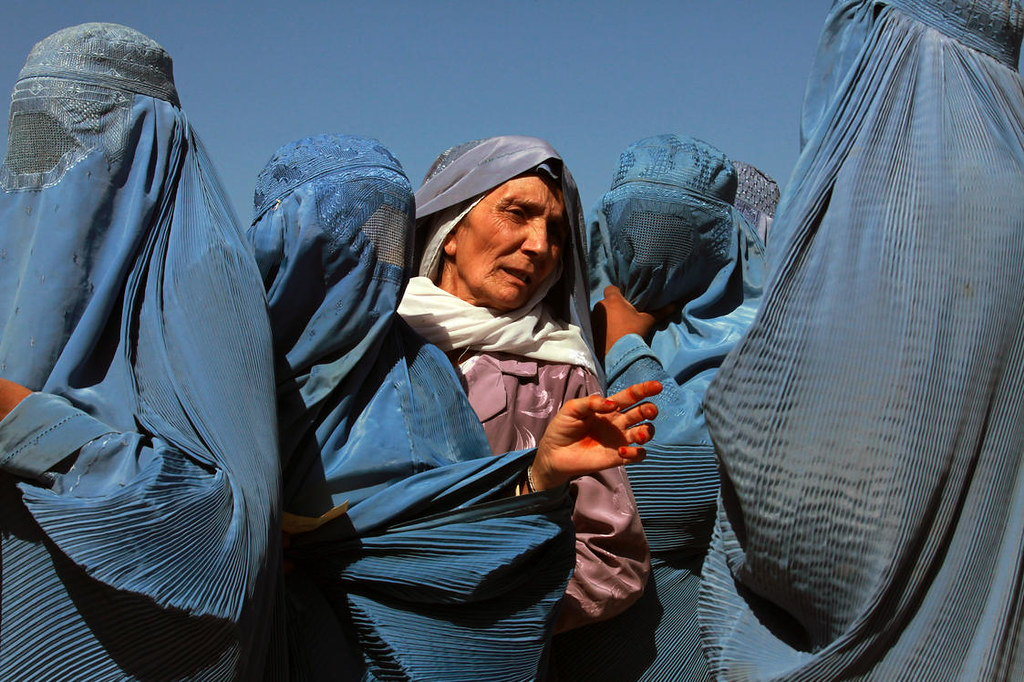Now a year since the Taliban took back control of Afghanistan following the US and UK forces’ hasty withdrawal, the lives of workers and their families have deteriorated, especially for women.
Despite promises that women would still be allowed to work and study, restrictions have been reintroduced on women’s rights and freedoms. For example, women’s clothing is regulated, and women are not allowed to access public areas without a male guardian.
Girls are no longer allowed to attend secondary school, with the Taliban citing the lack of female teachers needed for segregated education as the reason. Holes could be easily picked in that logic, but it is not logic that dictates women’s oppression other than the need to subjugate and impoverish thousands of women workers across the country. Over one million pupils have been affected and thousands of women teachers have been made unemployed.
Before last year’s events, 22% of the workforce were women but that figure has shrunk to 15% by the end of 2021. Many women who protested their imposed restrictions have gone missing and/or have been attacked for fighting back against these laws.
The economic situation has also soured with the economy contracting by approximately 30-40%, encouraged by the suspension of international aid into the country, the freezing of access to Afghanistan’s foreign exchange reserves and global food price inflation.
To compensate, the Taliban has increased its tax revenue and ramped up its coal exports.
Security challenges still to this day affect the Taliban rule, with 2,000 civilian casualties reported between August 2021 and June 2022. Seven-hundred of those casualties were deaths.
At least a dozen anti-Taliban forces still operate in Afghanistan such as ISIS-K, making the situation increasingly unpredictable.
Meanwhile, the Taliban has unsurprisingly carried out numerous human rights violations, including at least 160 extrajudicial killings of former government officials, detentions and torture.
All these factors have combined to create significant turmoil amongst the working class, impacting women the most as humanitarian crises tend to do.
Access to food, water, healthcare, education and shelter has become increasingly precarious, with women and girls’ current and future survival being threatened.
Majority of women have seen a complete loss of income in the last year whilst food prices have soared. Many were the sole wage earner in their family, and the Taliban has put entire families at risk of starvation and homelessness.
Even those who have retained their job, such as in primary school education and the healthcare sector, are not being paid or are facing drastic wage cuts. This is because these jobs were funded by the now suspended international aid.
Law enforcement inspections on women’s clothes, what mobile phones they are using, and workplace segregation have terrorised women in their daily lives, and undoubtedly women are subjected to further abuse by officials and ordinary men as they go about their day.
Working class families have not known peace in Afghanistan for decades before Taliban rule due to Western imperialism. Two decades of US occupation has meant that civilian casualties have dramatically plunged in the last year, but lives are still impacted. Over 241,000 civilian deaths, 4 million displaced internally, 7 million having fled as refugees and nearly half of its population below the poverty line, the Afghanistan working classes have not found their saviour in either the US or the Taliban.
Solidarity with the people of Afghanistan, who should not be pawns in capitalists’ and war mongers’ games anymore.
Georgina Andrews, is the Student Officer of the YCL



